Step into the world of animals that start with the letter “R”! Whether you’re seeking more insight into familiar friends or eager to uncover new and fascinating animals, you’ve come to the right place. Join us on this exploration of the animal kingdom, and let’s dive into the captivating world of creatures that proudly bear the letter “R!
Overview of Animals that Start with R
1. Rabbit
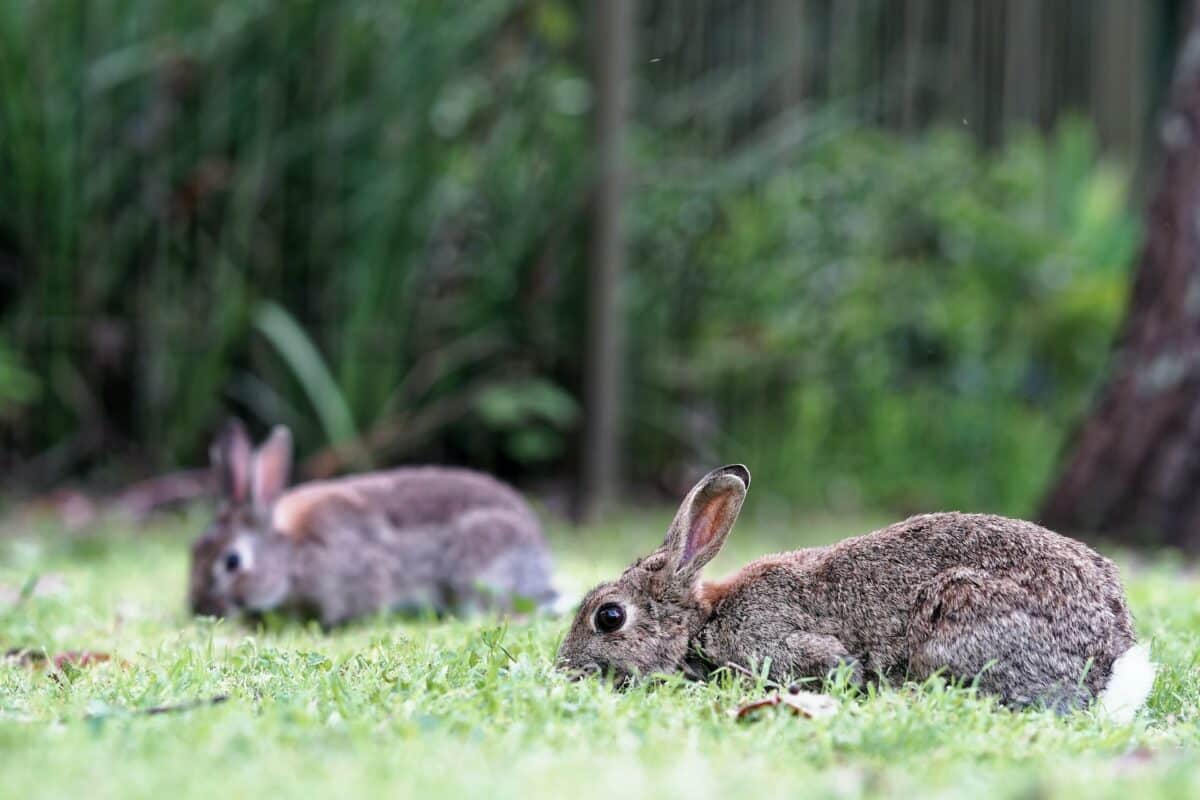
| Scientific Name | Oryctolagus |
| Where It Lives | Worldwide |
| What It Eats | Grasses, plants, some fruit and veg |
| Conservation Status | Variety of statuses ranging from Vulnerable to Least Concern according to the IUCN Red List |
Fun Fact: Rabbits are physically unable to vomit, yet they eat their own poop.
Rabbits, also lovingly referred to as bunnies, are widely distributed around the world, whether they are kept as pets or in a variety of grassy and densely vegetated habitats in the wild.
These fluffy herbivores are known for their distinctive long ears, furry coats, and long hind legs. They can see almost 360 degrees and can outrun many predators.
2. Racoon
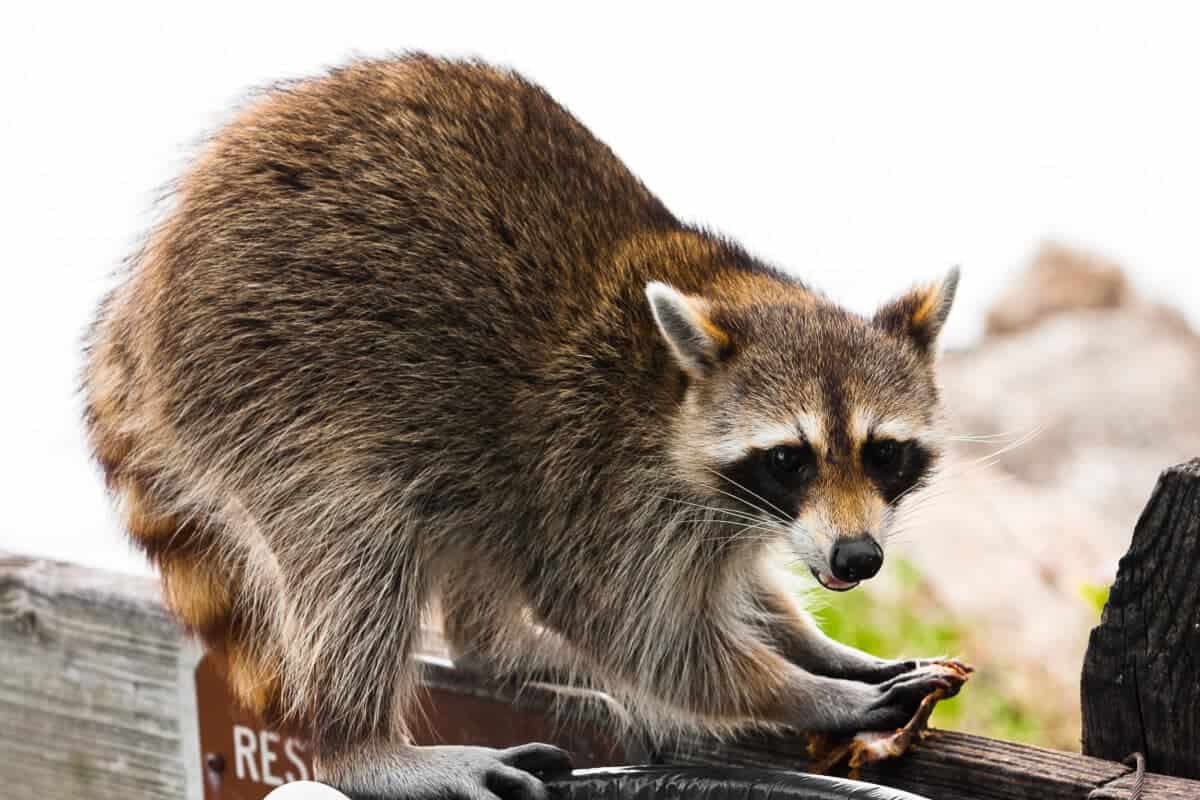
| Scientific Name | Procyon lotor |
| Where It Lives | North America |
| What It Eats | Fruit, plants, nuts, rodents, berries, frogs, insects |
| Conservation Status | Least Concern (LC) according to the IUCN Red List |
Fun Fact: The Racoon has excellent night vision; it is a good swimmer and very agile. They are Jacks of all trades!
The scavenging Racoon is native to North America where they inhabit areas ranging from cold grasslands to tropical climates to urban cities.
These mammals have black patches around their eyes like a mask, and a black-Ringed tail, with grey fur everywhere else. Raccoons are incredibly agile and can climb down trees head-first. Even though they are infamous scavengers, these animals wash their food with water before eating!
3. Radiated Tortoise
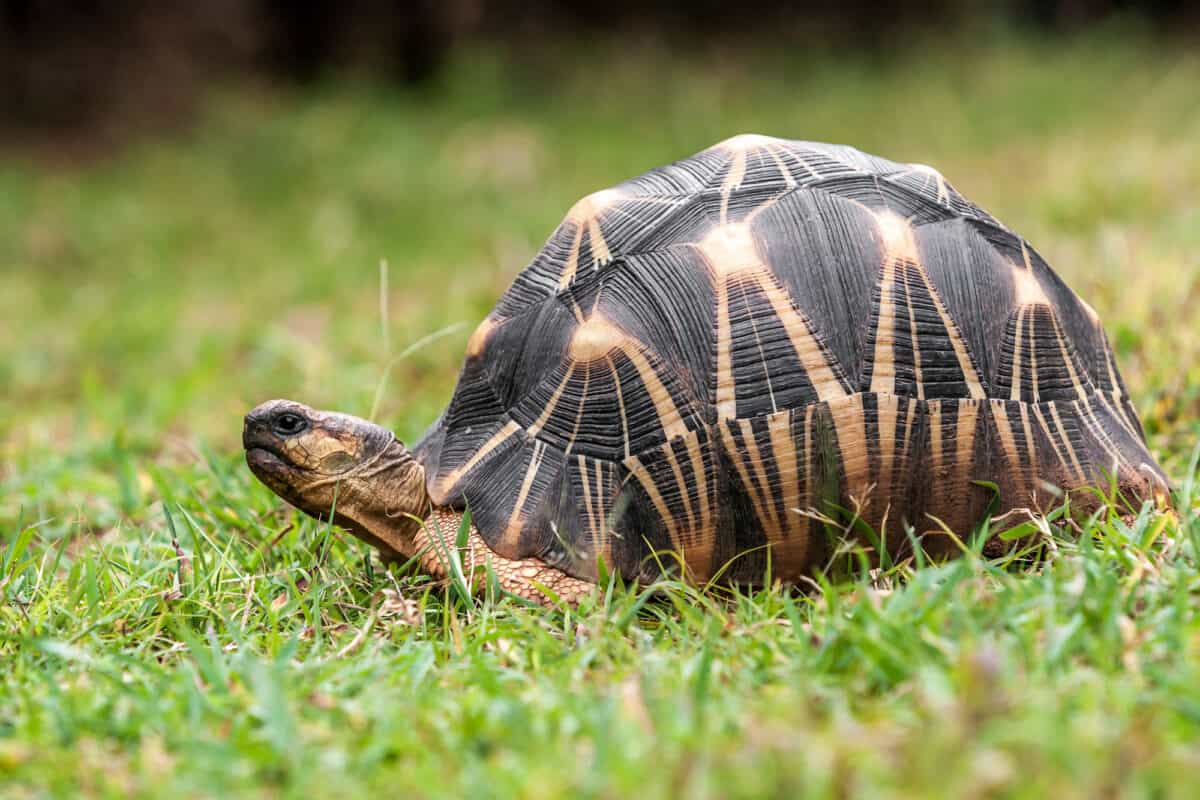
| Scientific Name | Astrochelys radiata |
| Where It Lives | Madagascar |
| What It Eats | Cacti, grasses, leaves, flowers |
| Conservation Status | Critically Endangered (CR) according to the IUCN Red List |
Fun Fact: This Tortoise is arguably the most beautiful tortoise in the world.
The Radiated Tortoise can only be found in the wild on the island of Madagascar, where they live in dry forests.
It has a high-domed shell that features complex markings. These solitary animals drink tons of water when it is available, but can also go for long periods without. They are highly adaptable to weather changes and can be seen “dancing” in the rain to shake it from their stunning shells.
4. Rattlesnake
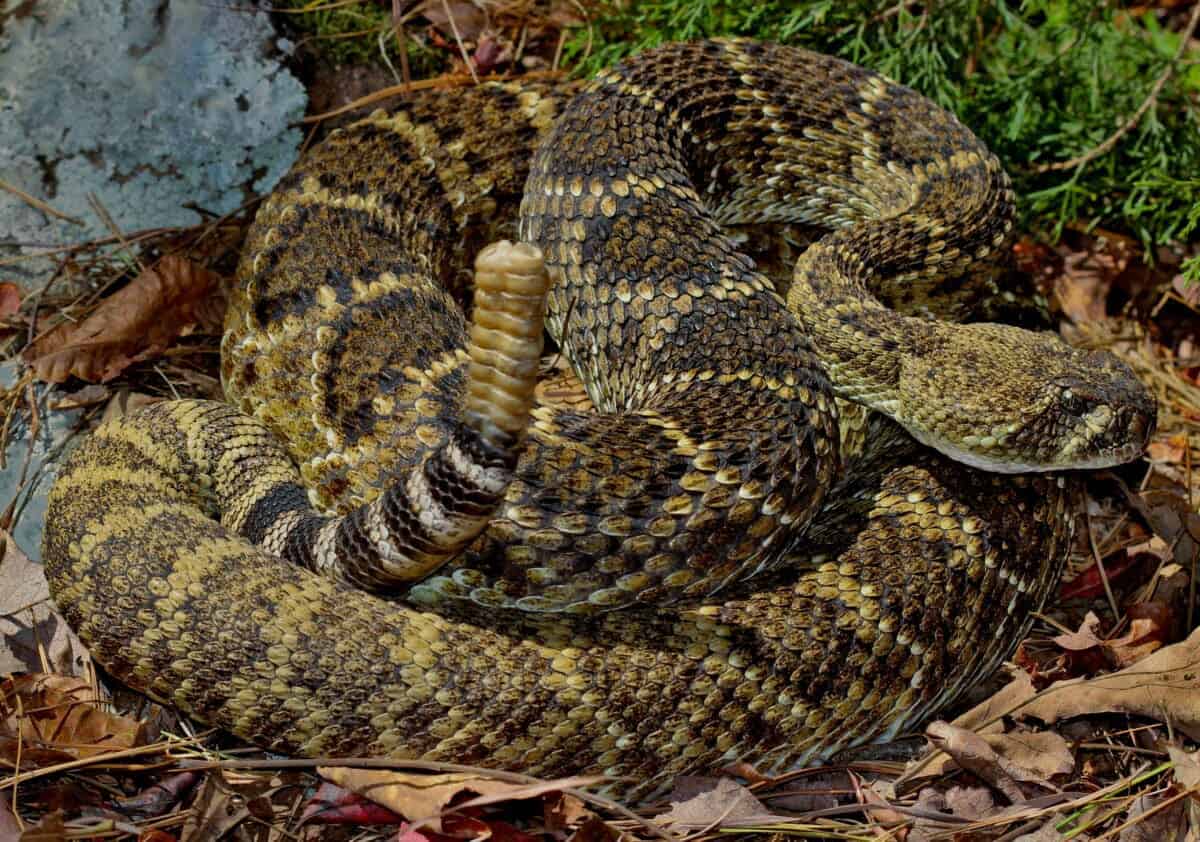
| Scientific Name | Crotalinae |
| Where It Lives | Americas |
| What It Eats | Birds, rodents, lizards, insects |
| Conservation Status | 1 Vulnerable (VU), 1 Critically Endangered (EN), 1 Endangered (EN) and the rest (LC) according to the IUCN Red List |
Fun Fact: Rattlesnake bites are very lethal, delivering a venom that will digest the prey before it begins to swallow it.
There are about 36 Rattlesnake species, of which most inhabit arid areas and some with highly specific habitat requirements. These venomous snakes are native to North America.
Notable for the rattles at the end of their tails which they use to warn attackers when they sense a threat. These predators lie and wait for potential prey, or they will go out and hunt in the holes where many of their prey live. In addition, rattlesnakes can also hiss like cats. And some can be over eight feet long.
5. Red-headed Finch
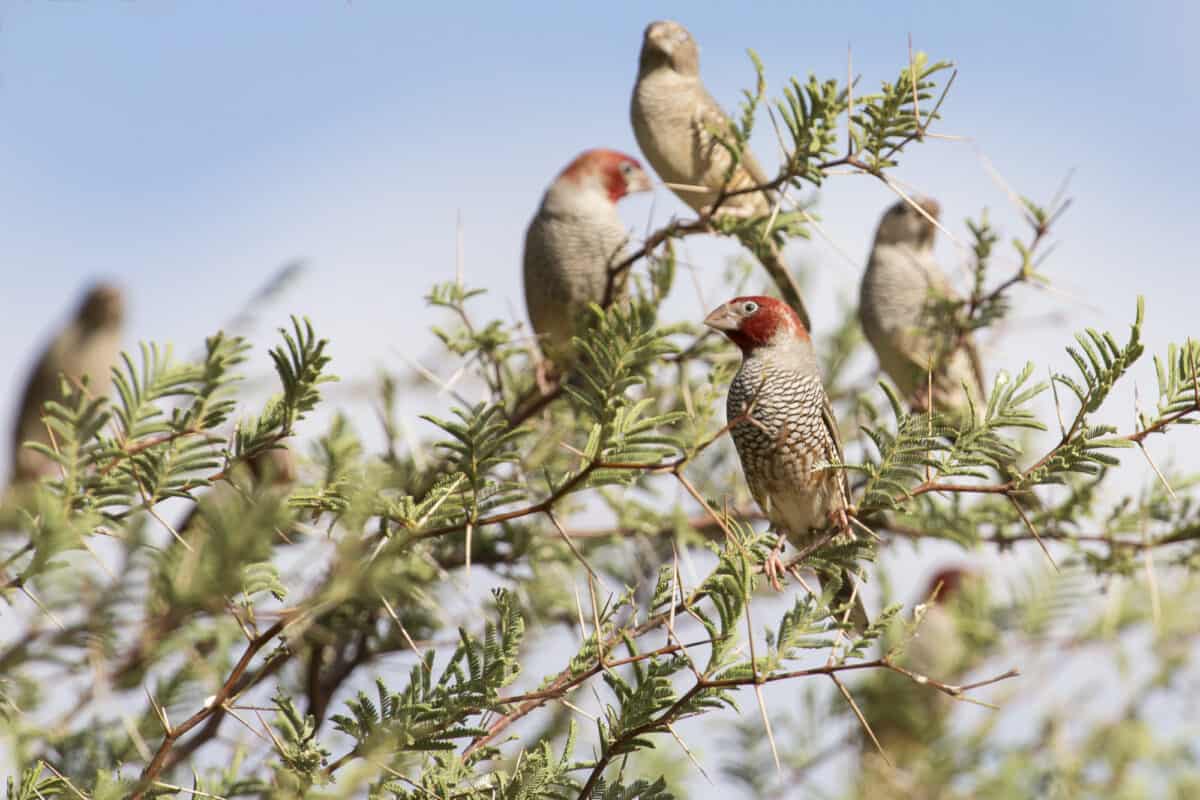
| Scientific Name | Amadina erythrocephala |
| Where It Lives | Africa |
| What It Eats | Insects, seeds |
| Conservation Status | Least Concern(LC) according to the IUCN Red List |
Fun Fact: Red finches are very social. If one Red Finch finds an acceptable feeder, it’ll probably come back the next day with some company.
The Red-headed Finch lives in dry savannah areas across Africa.
Ref-headed Finch males have bright red chests and heads – hence their name! These social birds live in flocks and feed together on the ground. During mating season they can be seen nesting in pairs or small groups. The females lay between four and six eggs that hatch after two weeks.
6. Red Fox
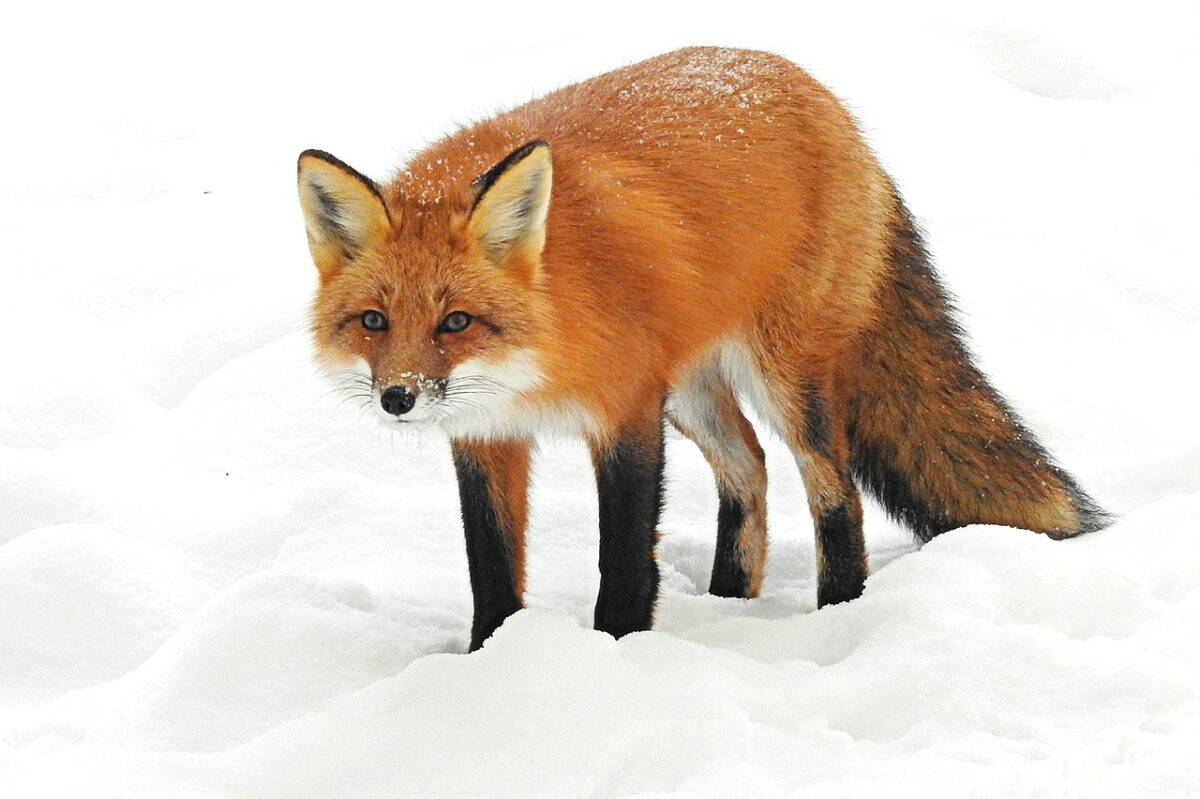
| Scientific Name | Vulpes vulpes |
| Where It Lives | Europe, Asia, Africa, Oceania, North America |
| What It Eats | Rodents, birds, rabbits, porcupines, reptiles, carrion |
| Conservation Status | Least Concern (LC) according to the IUCN Red List |
Fun Fact: Red foxes are very important transmitters of the rabies virus, so be careful not to be on the receiving end of a bite from one.
Red Foxes are highly adaptable animals and live in a wide range of habitats including forests, farms, deserts, mountains, grasslands, and even suburban areas across the Northern Hemisphere.
These mammals are scavengers who live in family groups of different sizes. Even if they are full, these animals carry on hunting and store the excess food in their dens. They have incredible senses and can hear a mouse a hundred feet away!
7. Red Knee Tarantula
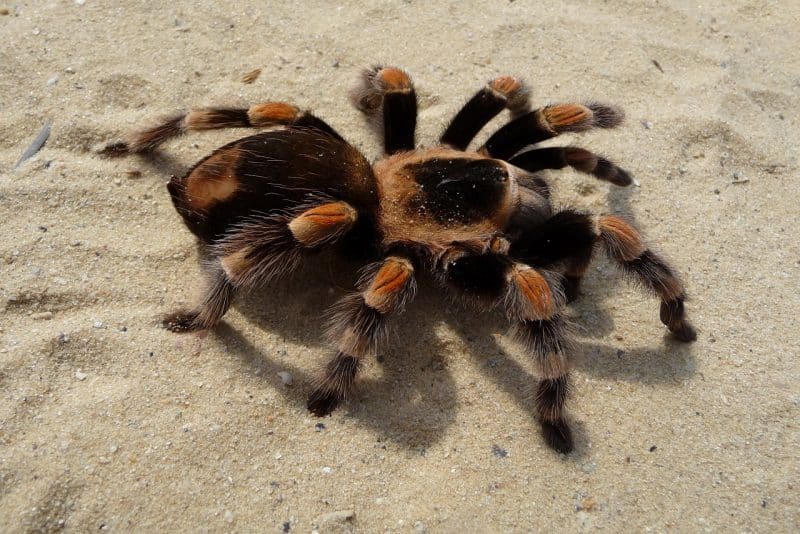
| Scientific Name | Brachypelma hamorii |
| Where It Lives | Mexico |
| What It Eats | Insects, small mammals, reptiles |
| Conservation Status | Near Threatened (NT) according to the IUCN Red List |
Fun Fact: Red Knee Tarantulas don’t live on webs; instead, they dig burrows and live underground.
The Red Knee Tarantula originated in Mexico where they occur in the wild in scrubland and semi-desert areas.
Red Knee Tarantulas do not spin webs like other spiders, instead, they burrow and spend a lot of their time underground. These spiders have a long life span, as females can live for thirty years whereas males live around five years. They are famous as pets to those who love spiders, as these tarantulas are very docile and calm.
8. Red Squirrel
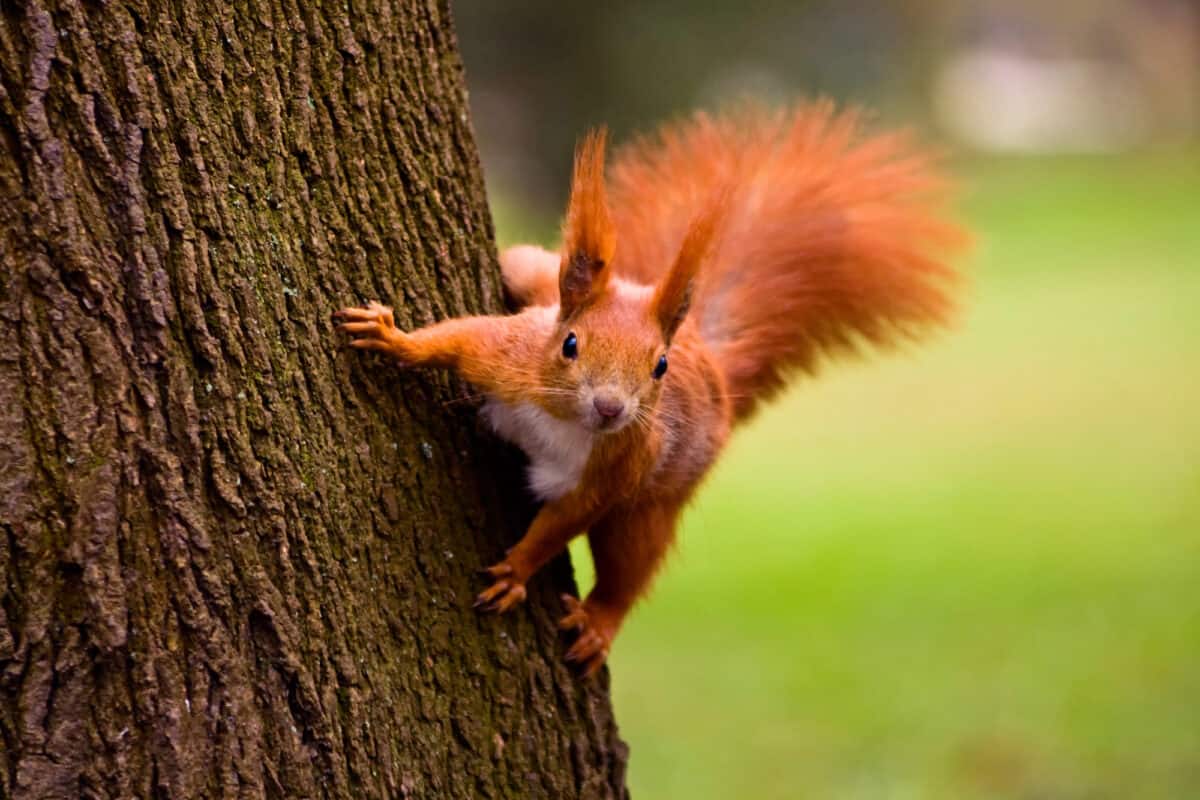
| Scientific Name | Sciurus vulgaris |
| Where It Lives | Europe, Asia |
| What It Eats | Seeds, nuts, berries, shoots |
| Conservation Status | Least Concern (LC) according to the IUCN Red List |
Fun Fact: Red squirrels are famous for their long memories, as they can remember the locations of nuts stored many years ago.
The Red squirrel inhabits the woods in many parts of Asia and Europe.
These squirrels do not hibernate during winter months but instead live off of the food supply they build up over the warmer months. They are even able to locate their supplies buried under 1 foot of snow! Even though they prepare for winter, very few Res squirrels reach one year of age due to death by disease or predator.
9. Red-handed Tamarin
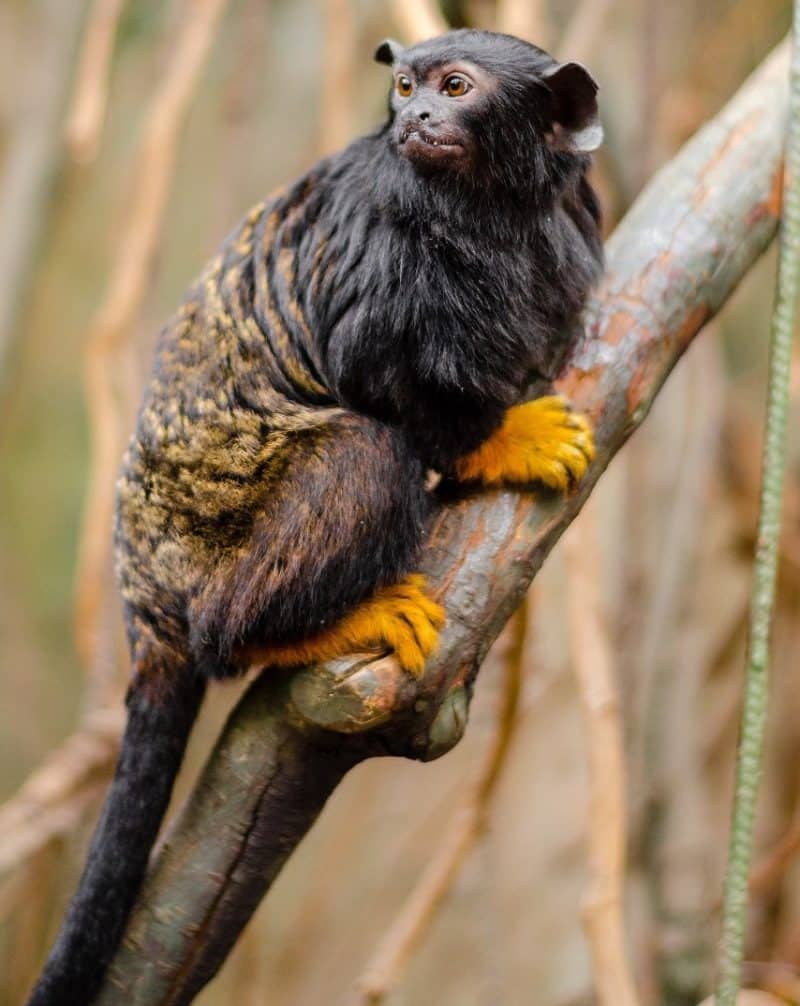
| Scientific Name | Saguinus midas |
| Where It Lives | Brazil, Guyana, Suriname |
| What It Eats | Fruit, insects, flowers, frogs, nectar, lizards |
| Conservation Status | Least Concern (LC) according to the IUCN Red List |
Fun Fact: Red-handed Tamarins can jump from a height of sixty feet to the ground without any injuries.
The striking Red-handed Tamarin inhabits the wooded areas around the Amazon River in South America.
These social animals live in large groups led by a female. Living in treetops, these animals spend their days searching for food and their evenings resting. They are highly territorial and will use their sharp canines and claws to fend off threats. Red-handed tamarins will also rush to defend one of their own when they are in trouble.
10. Red-winged Blackbird

| Scientific Name | Agelaius phoeniceus |
| Where It Lives | North America |
| What It Eats | Seeds, insects, mollusks, mussels, snails, frogs, berries, fruit |
| Conservation Status | Least Concern (LC) according to the IUCN Red List |
Fun Fact: Male Red-winged blackbirds are very aggressive and will likely attack humans that trespass into their territory.
Red-winged blackbirds are migratory birds that spend their breeding seasons in trees close to fresh and saltwater areas, and their migratory months near pastures, farmlands, and prairies.
Male Red-winged blackbirds have a distinctive red and yellow coloration at the shoulders and glossy black feathers everywhere else. These birds are very capable, they use their beaks to crack open seeds and acorns, spear insects and catch flies. They can even hop backward!
11. Reef Shark
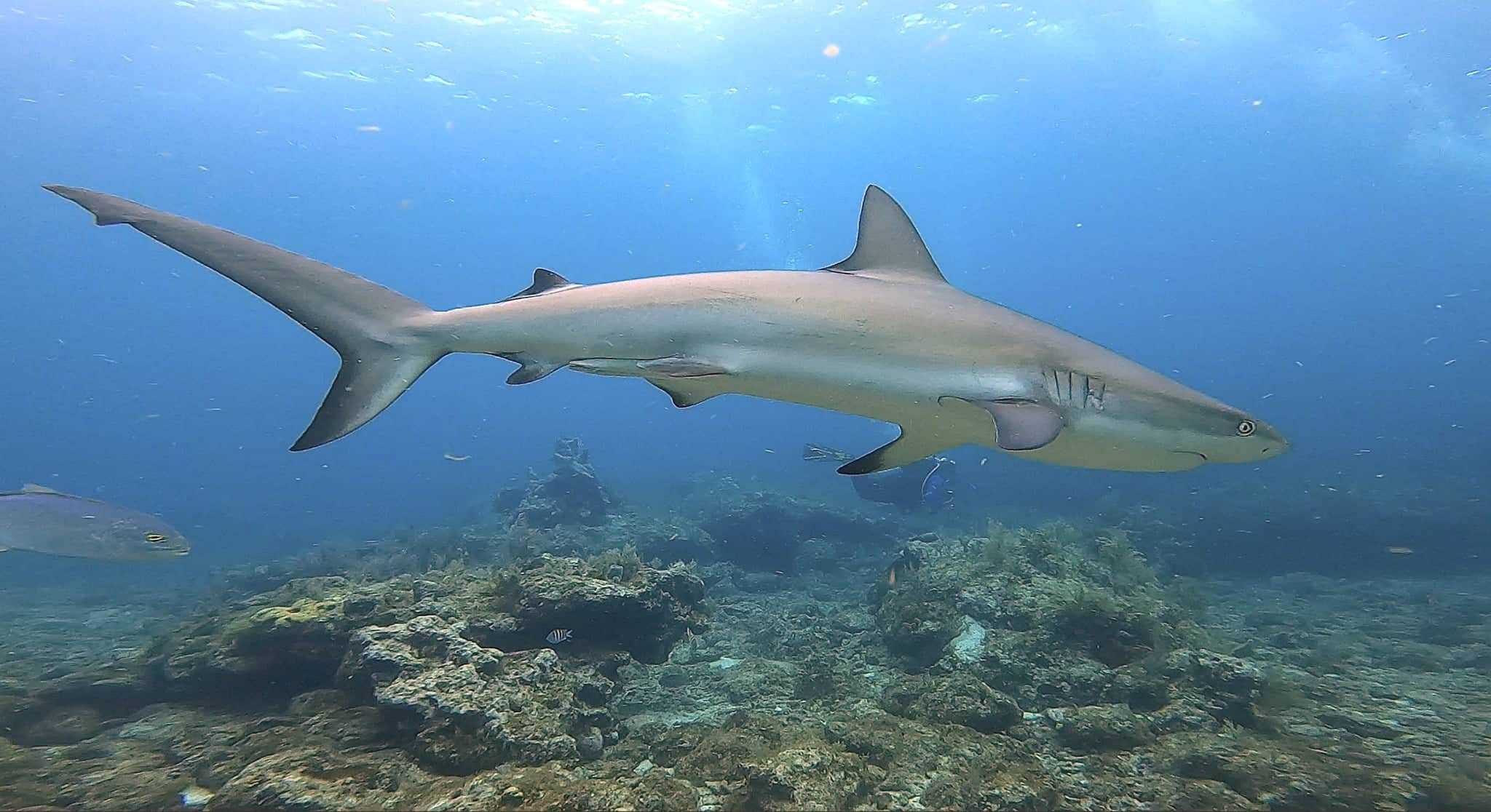
| Scientific Name | Carcharhinidae |
| Where It Lives | Oceans worldwide |
| What It Eats | Fish, squid, rays, sea lions, shrimp, crabs |
| Conservation Status | 2 Vulnerable (VU), 2 Endangered (EN), 1 Least Concern (LC) according to the IUCN Red List |
Fun Fact: Some reef sharks can turn their stomach inside out.
Reef sharks are usually found around the reefs of the world. They are brown or brownish-gray and have a lot of sharp teeth.
Female reef sharks are pregnant for 14 months and can give birth to 16 babies depending on her size! These sharks have incredible sight that helps them hunt during the night, migrate during seasons, and give live birth.
12. Reindeer
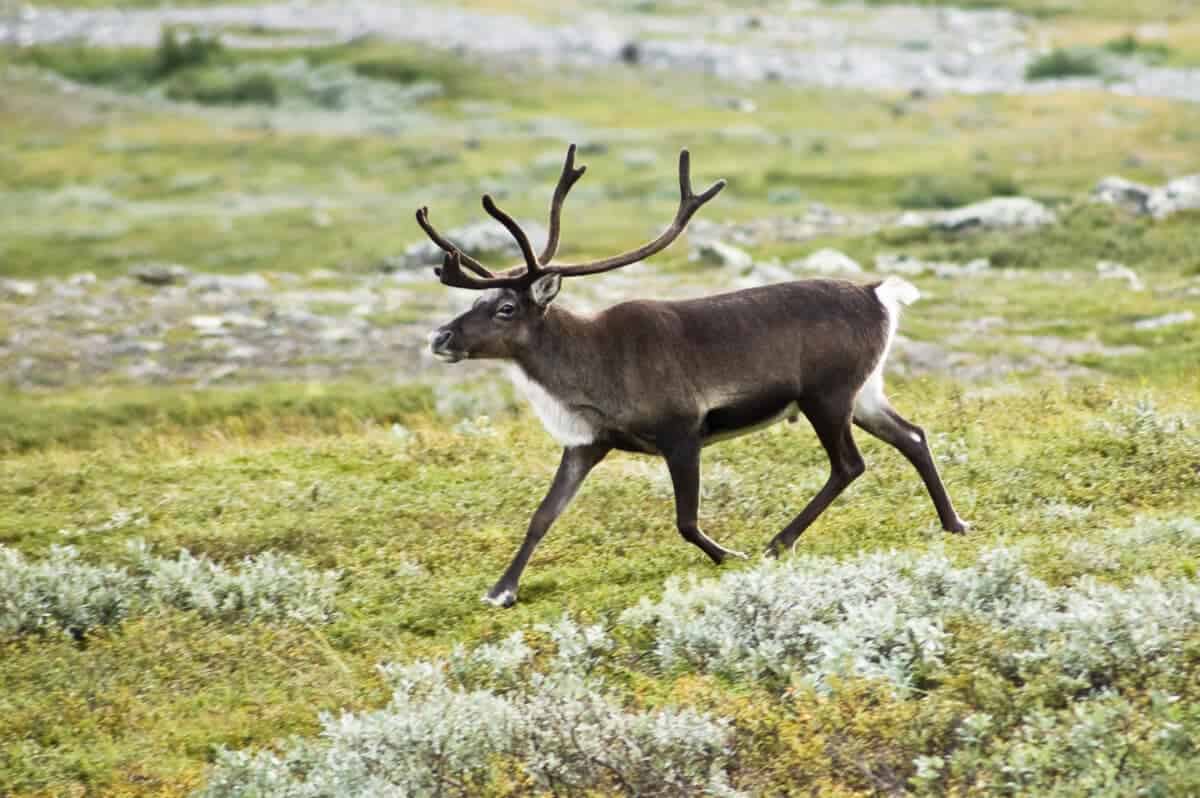
| Scientific Name | Rangifer tarandus |
| Where It Lives | North America, Europe, Asia |
| What It Eats | Lichens, leaves, birches, grasses |
| Conservation Status | Vulnerable (VU) according to the IUCN Red List |
Fun Fact: Reindeers are the only mammals that can see ultraviolet light.
Reindeer are native to North America, Asia, and Europe where they inhabit Arctic, sub-arctic, boreal, and mountain areas.
Some reindeer species stay in one place year-round, while others migrate seasonally. These social animals live in groups and can smell food under the snow in the cold climates they inhabit. They are also incredibly fast, reaching speeds of 50 mph!
13. Rhinoceros
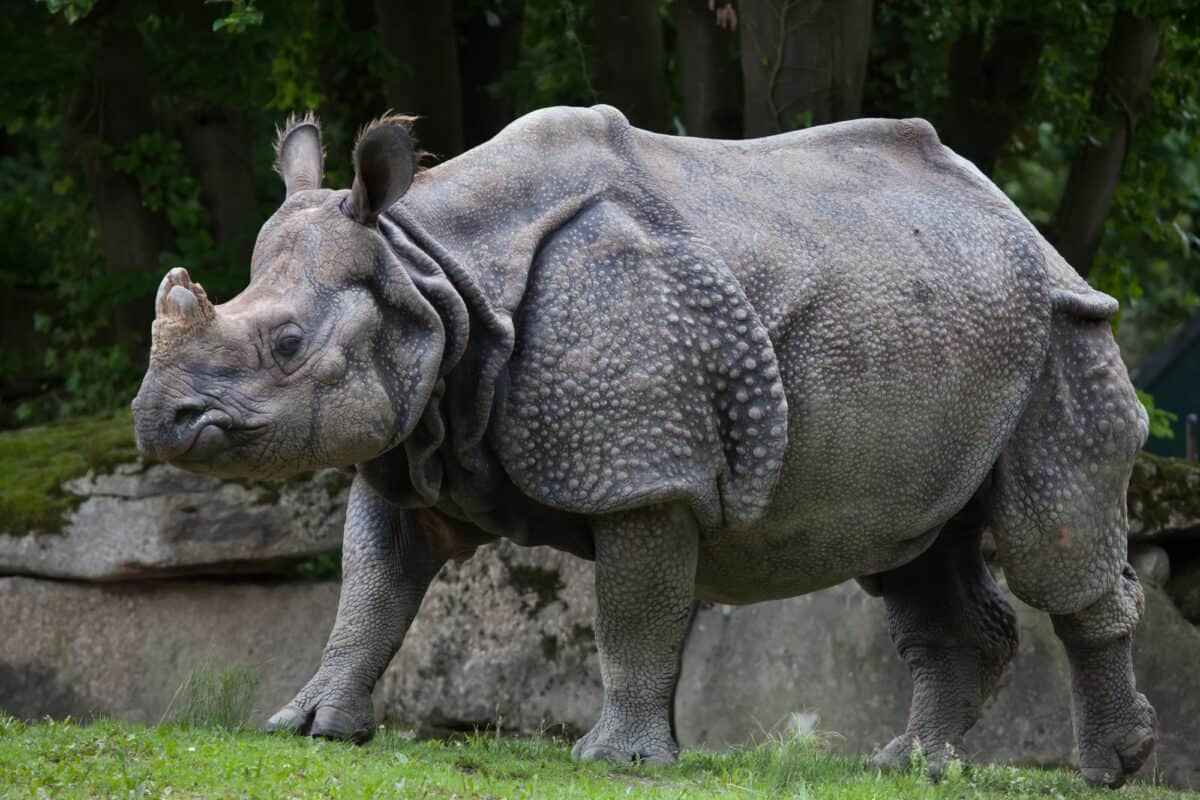
| Scientific Name | Rhinocerotidae |
| Where It Lives | Africa, Asia |
| What It Eats | Grasses, plants |
| Conservation Status | 1 Vulnerable (VU), 3 Critically Endangered (CR), 1 Near Threatened (NT) according to the IUCN Red List |
Fun Fact: A group of Rhinos is called a crash.
There are 5 rhino species today, all with their distinctive horns and leather-like skin, living in Africa and Asia.
Rhinos are the second-largest land animals in the world weighing around a ton, and can be quite aggressive! Sadly, due to many years of poaching these magnificent animals are under threat of extinction making conservation efforts of utmost importance!
14. River Otter
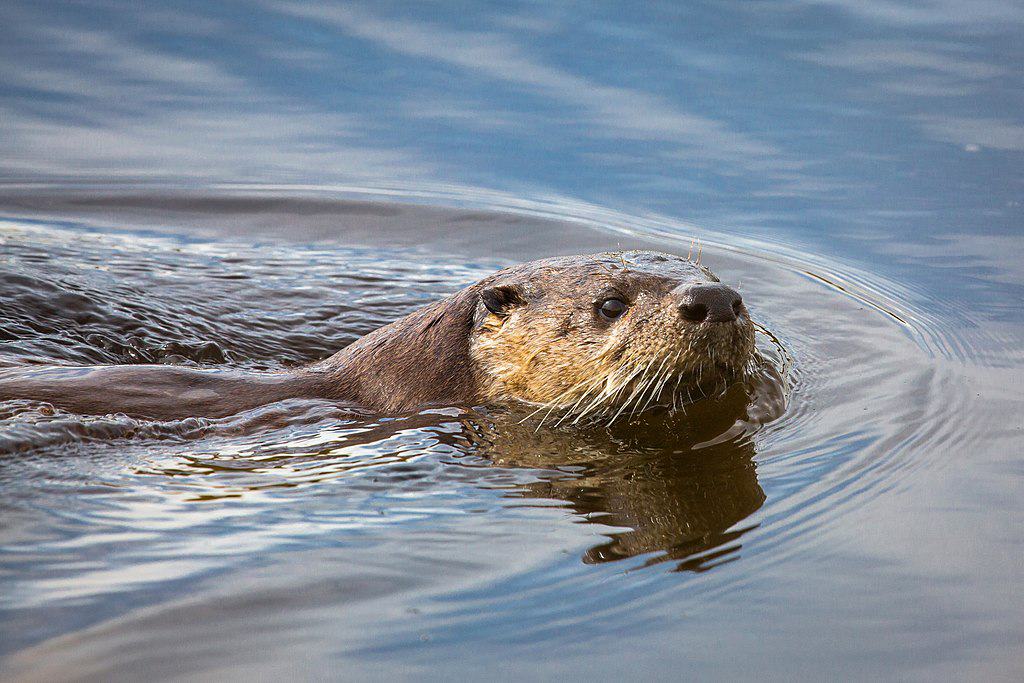
| Scientific Name | Lontra canadensis |
| Where It Lives | North America |
| What It Eats | Fish, frogs, birds, crayfish, reptiles |
| Conservation Status | Least Concern (LC) according to the IUCN Red List |
Fun Fact: River otters can hold their breath underwater for up to eight minutes.
There are various River Otter species in the world, but here we have a look at the North American River Otter. As the name suggests, they are native to North America where they live in rivers, streams, lakes, and swamps.
The River Otter is smaller than its relative, the sea otter. These animals have water-repellant coats that enable them to spend a lot of time underwater.
15. Ringed Kingfisher
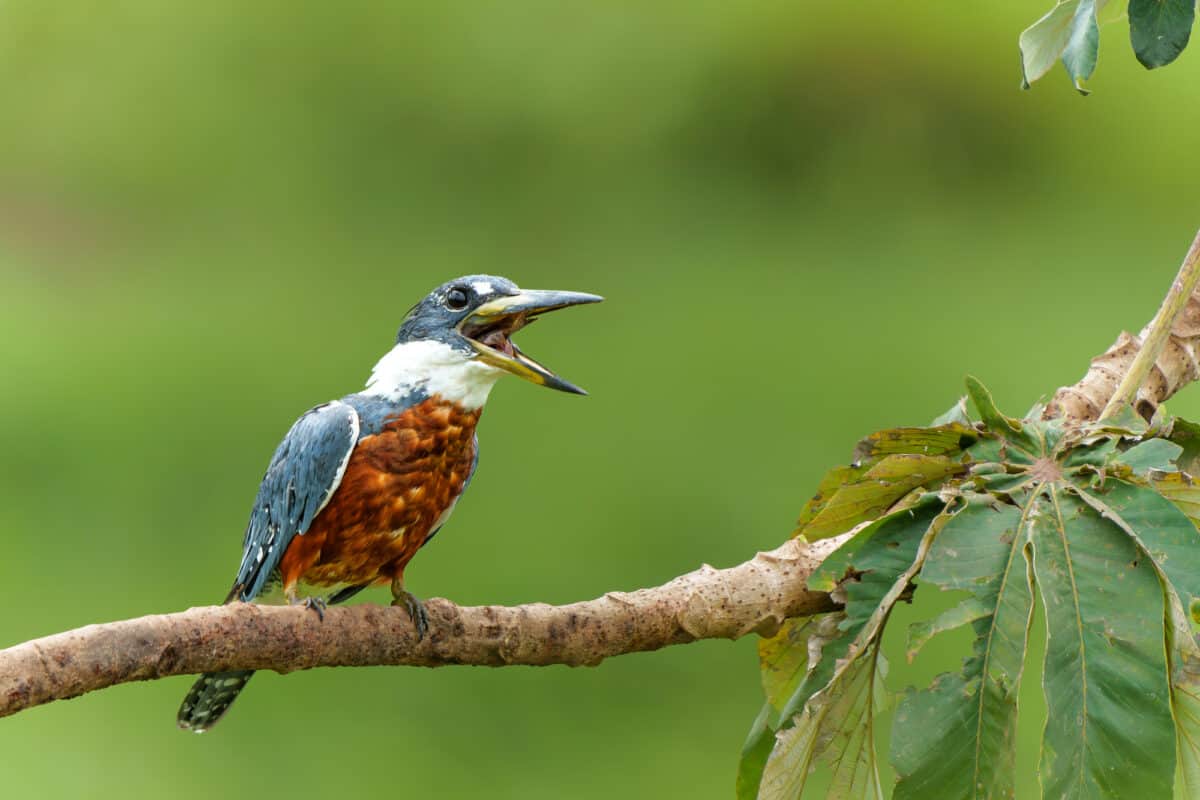
| Scientific Name | Megaceryle torquata |
| Where It Lives | North and South America |
| What It Eats | Fish, invertebrates, crustaceans |
| Conservation Status | Least Concern (LC) according to the IUCN Red List |
Fun Fact: Ringed Kingfishers may also eat hummingbirds.
Ringed Kingfishers live near freshwater areas and tropical and temperate marine coasts in North and South America.
These birds are good hunters who will swoop over water bodies and dive in to catch fish. Their strong wings allow them to fly steadily for long periods of time. These large birds are quite noisy and can be heard if in the vicinity.
16. Ruby-throated Hummingbird
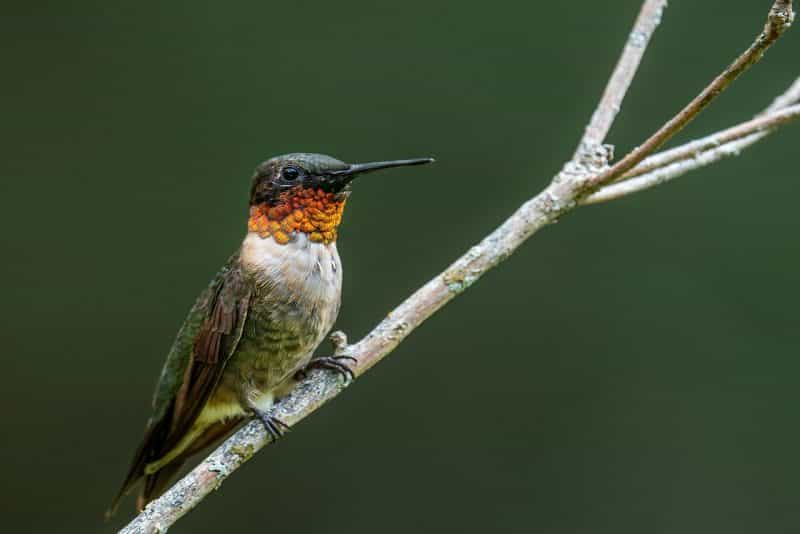
| Scientific Name | Archilochus colubris |
| Where It Lives | Central America, Caribbean Islands |
| What It Eats | Nectar, insects |
| Conservation Status | Least Concern (LC) according to the IUCN Red List |
Fun Fact: The Ruby-throated hummingbird can flap its wings up to eighty times a second.
The tiny Ruby-throated Hummingbird lives in gardens, forests, and orchards throughout large parts of the eastern United States and southeastern and south-central Canada.
Although tiny, these hummingbirds have impressive metabolic rates. Their heart reaches 1260 beats per minute and they take about 250 breaths per minute. When perched on a branch, they can only shuffle along to move but they move their wings at impressive speeds while flying!
17. Rockhopper Penguin

| Scientific Name | Eudyptes moseleyi |
| Where It Lives | Sub-Saharan Africa |
| What It Eats | Fish, octopus, squid, krill, plankton, crustaceans |
| Conservation Status | (LC) according to the IUCN Red List |
Fun Fact: Rockhopper Penguins mate with a single partner for life.
Rockhopper Penguins live along the rocky shorelines of South Africa, Argentina, Australia, Chile, and New Zealand.
Although these are the tiniest species of crested penguins they are extremely brave spending their winters in the open oceans and only coming to shore as mating season nears. The males care for the baby penguins while the females forage for food.
18. Red-eared Slider
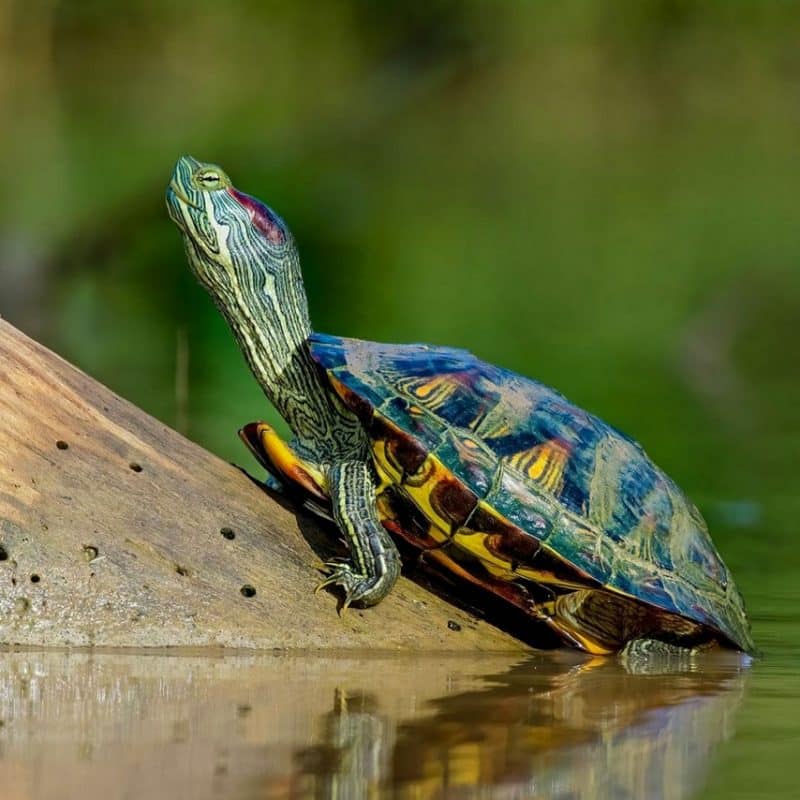
| Scientific Name | Trachemys scripta elegans |
| Where It Lives | Mexico, United States |
| What It Eats | Fish, worms, crayfish, snails, tadpoles |
| Conservation Status | Least Concern (LC) according to the IUCN Red List |
Fun Fact: Red-eared sliders are cold-blooded and often bask in the sun.
The beautiful Red-eared Slider lives in areas with still waters, such as lakes, streams, and slow-flowing rivers in Mexico and the United States.
These animals got their name from the speck of red on the side of their head, and their ability to slip off rocks and logs quickly entering the water. They spend most of their time in the water but as they are cold-blooded reptiles they need to bake in the sun to regulate their body temperatures.
19. Roe Deer
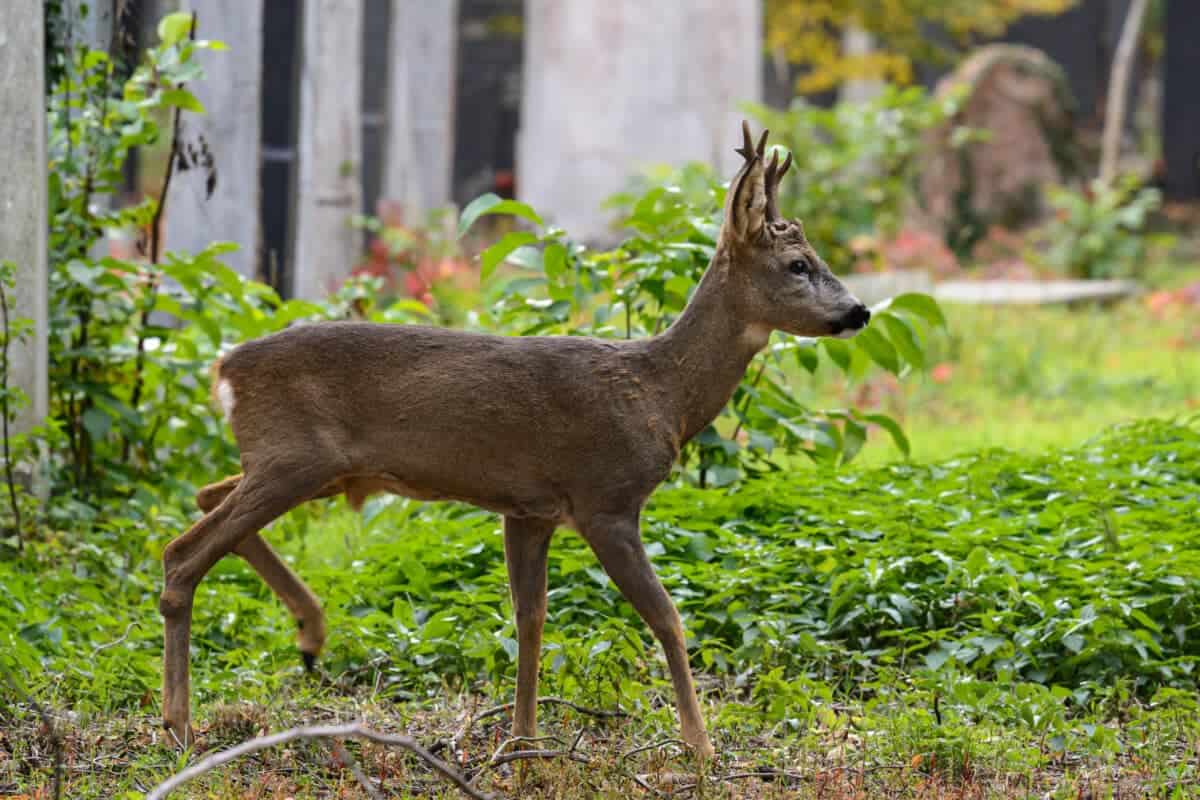
| Scientific Name | Capreolus capreolus |
| Where It Lives | Europe, Asia, North America |
| What It Eats | Grass, leaves, shoots, berries |
| Conservation Status | Least Concern (LC) according to the IUCN Red List |
Fun Fact: Roe deer are the only hoofed animal that can delay the development of a fertilized egg till environmental conditions are favorable for the pregnancy.
The Roe Deer lives in dense woodland, forests, grass meadows, and forest-steppe areas in parts of Europe, Asia, and North America.
During winters these animals live in groups in their foraging areas but are more spread over their territories during summer seasons. Females emit high-pitched sounds to attract males when they are ready to mate.
20. Roseate Spoonbill

| Scientific Name | Platalea ajaja |
| Where It Lives | Caribbean Islands, Central America |
| What It Eats | Frogs, aquatic insects, frogs, newts, small fish |
| Conservation Status | Least Concern (LC) according to the IUCN Red List |
Fun Fact: The Roseate Spoonbill is so named because of its pink color and spatula-shaped beak.
Beautiful Roseate Spoonbills live in coastal marshes, lagoons, bays, and mudflats across the Caribbean Islands and Central America.
The Roseate Spoonbill is a large wading bird that habitually wades for long hours while foraging for food. These birds sleep standing up, normally with one foot tucked underneath their bodies. And while they walk they appear to be dancing, swinging their heads from side to side.
Summary of Animals that Start with R
All these animals start with the letter R, and some can even be found near you. We hope you enjoyed the list. Here is another post for animals that start with b.
Here is the full Animal Alphabet:
- Animals That Start With A
- Animals That Start With B
- Animals That Start With C
- Animals That Start With D
- Animals That Start With E
- Animals That Start With F
- Animals That Start With G
- Animals That Start With H
- Animals That Start With I
- Animals That Start With J
- Animals That Start With K
- Animals That Start With L
- Animals That Start With M
- Animals That Start With N
- Animals That Start With O
- Animals That Start With P
- Animals That Start With Q
- Animals That Start With S
- Animals That Start With T
- Animals That Start With U
- Animals That Start With V
- Animals That Start With W
- Animals That Start With X
- Animals That Start With Y
- Animals That Start With Z
Thank you for reading!
Join our Forum for free today!

- These are The 5 Largest Great White Sharks Ever Recorded - July 19, 2024
- The Surprising Benefits of Big Game Hunting - July 18, 2024
- $100k+ Hunting Experiences The Most Expensive Animals to Pursue - July 17, 2024


